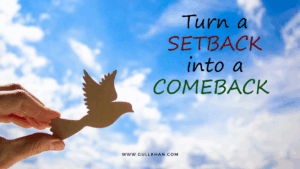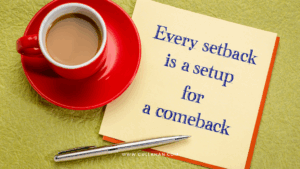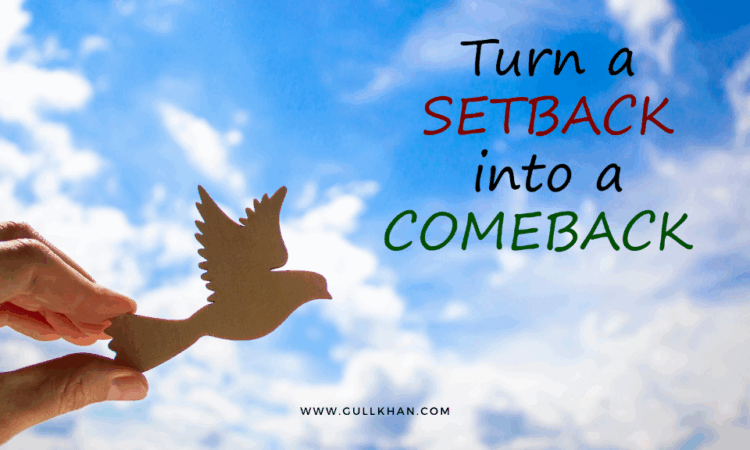Introduction: Setbacks Are Not the End—They’re the Setup
 Let’s get one thing straight: financial setbacks are not a sign of failure. They’re a natural, inevitable part of the journey to wealth. Whether it’s debt, a failed investment, a lost job, or unexpected expenses—every financially empowered person you admire has walked through their own valley.
Let’s get one thing straight: financial setbacks are not a sign of failure. They’re a natural, inevitable part of the journey to wealth. Whether it’s debt, a failed investment, a lost job, or unexpected expenses—every financially empowered person you admire has walked through their own valley.
But what separates those who spiral from those who rise again? It’s not luck. It’s mindset. It’s emotional resilience. And most of all, it’s the ability to alchemize pain into power
Stop Letting Shame Lead the Conversation
The first and most dangerous side effect of a financial setback is not the money—it’s the shame.
“I should have known better.” “I can’t believe I messed up again.” “What will people think?”
These thoughts don’t just hurt. They trap you. When we wrap our identity around the failure, we stop seeing the situation as something that can be changed—and start seeing it as who we are.
But here’s the truth: your worth is not tied to your bank balance. Your intelligence isn’t erased by one bad decision. Financial shame is a lie designed to keep you stuck.
Analyze Without Blame
 Once you’ve addressed the emotional response, it’s time for an honest review—without judgment.
Once you’ve addressed the emotional response, it’s time for an honest review—without judgment.
Ask yourself:
- What really happened here?
- Were there any signs I ignored?
- Was this rooted in fear, urgency, lack of planning—or something deeper?
This isn’t about blaming yourself. It’s about reclaiming your power. Every single misstep holds data. Every loss carries a lesson. If you can extract the wisdom, you come out stronger and sharper.
Rebuild with a Regulated Nervous System
You can’t make empowered money decisions when you’re in survival mode. Period.
So before you launch into a comeback plan, regulate your nervous system. Breathe. Rest. Reconnect to safety. Do whatever you need to feel grounded.
That might look like:
- Journaling your fears
- Doing a body scan meditation
- Talking to a financial coach or therapist
- Creating a small, manageable daily action plan
Healing your relationship with money isn’t just mental—it’s somatic. Your body needs to feel safe with money again.
Create a Bounce-Back Blueprint
Now, with clarity and calm, it’s time to rebuild. But not from desperation. From power.
Here’s a framework to guide your bounce-back:
- Set a 30-Day Micro Goal – Something achievable that gives you a quick win (e.g., pay down x of debt, save x, pitch 3 new clients).
- Simplify Your Financial Focus – Don’t try to do everything at once. Pick the one area with the biggest domino effect (e.g., increasing income, tracking spending).
- Celebrate Every Win – Every naira you save, every limiting belief you rewrite—acknowledge it. Your brain thrives on reward.
Remember, bouncing back is a skill. The more you practice it, the stronger you become.
Conclusion: Setbacks Are the Gateway to Mastery
 What if your biggest money mistakes weren’t roadblocks—but rites of passage?
What if your biggest money mistakes weren’t roadblocks—but rites of passage?
Every successful entrepreneur, investor, or conscious wealth builder has a “comeback story.” Your setback is simply the beginning of yours.
So take a breath. Drop the shame. Hold your head high. Because the version of you that emerges from this challenge? They’ll be unstoppable.
Join the Conversation
What’s one lesson a financial setback taught you? Share it below or DM us @moneymindsetwithgullkhan—because your story could be the light someone else needs.
#MoneyMindset #FinancialFreedom #BounceBack #AbundanceMindset #GullKhan #WealthWisdom #MoneyHealing #SpiritualMoney #Resilience



 Healing the Relationship with Wealth
Healing the Relationship with Wealth